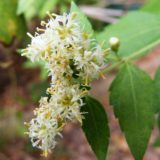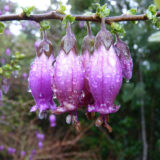Table of Contents
Tropane Alkaloid Background, Information and More
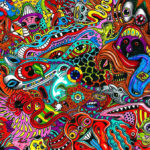
Tropane Alkaloids: Some of the World’s Oldest Medicines
Tropane Alkaloids are also known as simply ‘tropanes’ and sometimes ‘tropeine’. They are most commonly found among the Solanaceae (Nightshade) family, and very prevalent throughout Central and South America. They are even more common among the psychoactive nightshades. Technically, they are esters of tropanal mixed with a number of acids. Due to their various plant and use associations, it can be hard to understand what these alkaloids actually are. Breaking down tropane alkaloids a little more will help one better understand where they come from and what they do.
Are Tropane Alkaloids Psychedelics?
Some tropanes contribute to psychedelic effects. There are a large number of nightshades which are hallucinogenic largely in part due to the tropanes present in the plant. There are also some tropanes which are not psychedelic.
Are Tropane Alkaloids Psychoactive?
Tropane alkaloids absolutely possess compounds with psychoactive effects. In fact, they are most well known for their psychoactive uses, sometimes being regulated (such as Hyoscyamine in the United States and Australia). They have been employed on broad, commercialized scales in some cases, and in other cases are very seldom used.
Tropane Alkaloids’ Close Relationship to Cocaine
Most people do not realize how close a relationship tropane alkaloids share with cocaine. In fact, they are so closely chemically related that under the right circumstances, they can induce similar stimulating, euphoric effects. One tropane alkaloid, 2-tropanone, is even an actual metabolic product of cocaine.
List of Known Tropane Alkaloids and Uses (Medicinal or For Recreation)
These are the main tropane alkaloids and the ways they are commonly used in medicine or for recreation (when applicable).
Anisodamine
Aka 7β-hydroxyhyoscyamine, this tropane alkaloid is an anticholinergic (blocks the neurotransmitter acetylcholine in the central and peripheral nervous systems). It has a large number of medicinal uses, but also can act as a deliriant dire when taken for recreation. It is present in many of the nightshade plants.
Anisodine

The Anisodine can be found in a lot of the nightshades, especially the datura species. It is an anticholinergic drug, but also an antispasmodic (suppresses muscle spasms). As an α1-adrenergic receptor agonist, it has the ability to stimulate the production of epinephrine and norepinephrine.
Apoatropine
Abundant tropane found in the plants of the Nightshade family (aka Solanaceae). It is especially high in content within the root of Belladonna.
Aposcopolamine
This tropane alkaloid is found most prevalent in the Datura ferox plant, and a few species of Physochlaina (all plants of the Solanaceae Nightshade family).
Atropine
This is one of the most important tropane alkaloids of them all. It has been used to treat nerve agent and poisonings. It can be used to treat slow heart rate. It is used to decrease the production of saliva before surgery. When provided for a medical use, it is normally injected. It has stimulating effects when used in low doses, but can also lead to tachycardia, urinary retention, constipation, and a number of other unpleasant side effects during overdose. In medium to heavier doses, it can be very sedating and cause sleepiness, and central nervous system depression. It was very commonly used for anesthesia, sometimes in combination with opium in earlier times (old Roman and Islamic Empires, and throughout Europe until ether, chloroform and modern anesthetics took over). It has been used to treat pain.
Belladonnine
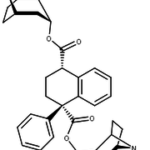
An abundant tropane found in the Belladonna and some other Nightshade family plants. It has been commercially mimicked in form of the synthetic ‘belladonnine’ (usually includes atropine as well).
Catuabine
Catuabines are found in the Erthroxylum vaccinifolium plant in extremely high content. The Brazilian medicine Catuaba mostly relies upon Catuabine for its effects as a central nervous system stimulant. This tropane also provides effects of an aphrodisiac.
Hyoscine (aka Scopolamine)
Scopolamine is one of the most important, well known and used tropane alkaloids. Hyoscine has been used to treat motion sickness and nausea. In fact, it has been very widely commercially available for the treatment of motion sickness. It is also used sometimes to decrease saliva before surgery. It is a powerful antimuscarinic, working to block effects of acetylcholine of the nervous system. Scopolamine is one of the more well-researched of the tropanes, so it makes sense it is more widely understood and employed. It is one of the hallucinogen-inducing tropanes and has been semi-popular in the recreational scene. It does have some pretty unpleasant mental and physical side effects and can be physically dangerous when overused or if repeated use persists.
Although it is not illegal, it does frequently require a prescription. Still, it is used frequently for recreation under the street name “Devil’s Breath.”
Hyoscyamine

This tropane alkaloid is sometimes known as Daturine. It is found in very high content within the henbane species, mandrake plant, Daturas (especially Jimsonweed), the tomato plant and Atropa belladonna (aka the Deadly Nightshade). Hyoscyamine is a well known prescription drug (regulated as prescription only in the United States and Australia), and goes by the brand names (in alphabetical order): Anaspaz, Buwecon, Cystospaz, Donnamar, Egazil, HyoMax, Levbid, Levsinex, Levsin, Neoquess, NuLev, Spacol T/S, and Symax.
Hyoscyamine is an antimuscarinic, blocks acetylcholine action in many places, including the central nervous system. It can antagonize serotonin. It is nearly as anticholinergic as atropine. It can provide relief for many medical conditions, treat some heart problems and help with Parkinson’s disease. It has been used for pain relief, and is sometimes combined with opioids to obtain an effective analgesic.
Littorine
This tropane is very common in the Datura and Atropa belladonna plants and is very close in chemical structure to other tropamines (including Atropine, Hyoscyamine and Hyoscine).
Methylecgonidine
This tropane is produced as a derivative of cocaine or ecgonine. It is produced when someone smokes crack cocaine, and has an interesting half life that can be used to determine how long ago the user smoked the substance. It is also possible to produce cocaine from methylecgonidine, and thus it is a controlled substance in many countries.
Scopine
Found in the Mandragora root, and a few other plant, Scopine is obtained by hydrolysis of Scopolamine. Scopine is an epoxy derivative of tropine.
Tropinone
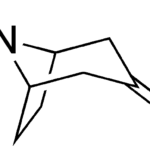
This tropane alkaloid is a precursor to atropine. Tropinone shares the same tropane core structure as cocaine and also atropine. It is commonly associated with cocaine analogues
Last Words About Tropane Alkaloids
Despite the fact tropanes are well known for their high content in the nightshade plants, they are also widely available in a number of other plants. Tropanes can be found in nearly all species of Erythroxylum, in plants within the Proteaceae family, and even in field bindweed. Tropanes have been used for a number of medicines and for many ailments for thousands of years. They are a huge part of cultural medicine and have even been produced commercially for Western medicinal use. Tropanes are still very understudied and there are most likely many more tropanes to be discovered, acknowledged and explored!
